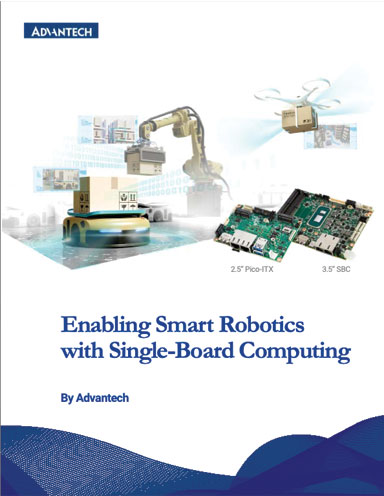As robots get smarter, they’re able to tackle more tasks, relieving humans of tedium and hazard. But how are they getting smarter?
Part of the answer is in a proliferation of form factors and increasingly sophisticated software stacks. Both rely on powerful compute architectures, such as single-board computing.
In this white paper from Advantech, you can learn about the evolution of robots from the behemoths of factory floors decades ago to a range of devices that can be helpful in the warehouse, out in the field, on the roads, or even in the home.
Robotics market sees steady growth
From collaborative robot arms and mobile robots to autonomous vehicles and drones, adoption of autonomous systems is steadily increasing. The COVID-19 pandemic and subsequent supply chain challenges and exacerbated labor shortages are driving interest. All of these technologies depend on complex hardware and machine learning to maneuver through dynamic environments, handle a wider variety of items, and interact with humans. Developers can now take advantage of more efficient sensors and novel materials for soft robots to solve real-world problems. In addition, robots are specializing, becoming more dexterous and nimbler or more rugged as needed.
Overcome constraints with SBCs
But constraints remain, such as compute power, energy efficiency, and total system expense. Robotics developers, suppliers, systems integrators, and ultimately end users are always conscious of the tradeoff between capability and cost.
Single-board computers, which include chipsets, I/O, and other features of standard, multi-board computers, offer robot makers reliability and design flexibility.
Check out this white paper to get specifics on rapidly evolving robotics markets, as well as how compute design can enable new applications. Founded in 1983, Taipei, Taiwan-based Advantech offers hardware, software, embedded systems, automation, and global logistics support.
Sponsored by Advantech
Article topics
Email Sign Up












